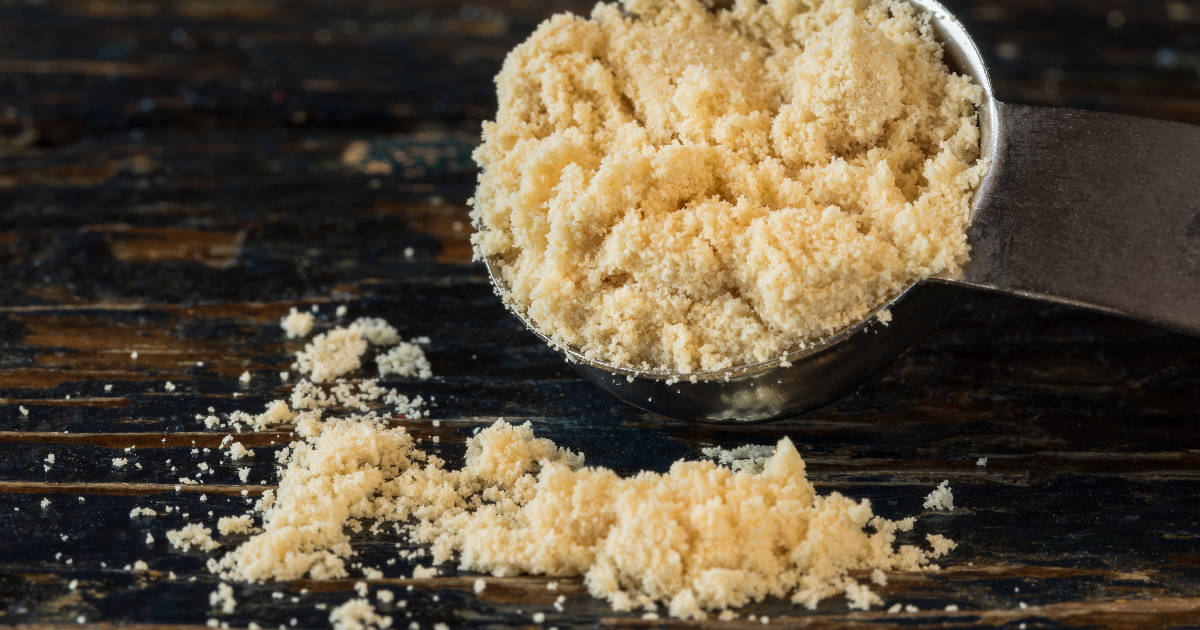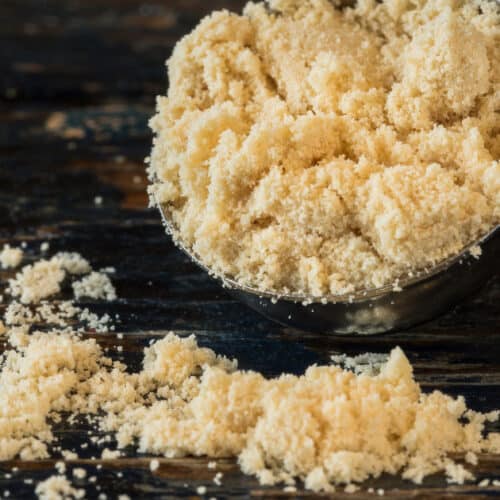Malt powder is a versatile ingredient that can add rich, sweet flavor to a variety of baked goods, beverages, and other recipes.

Making your own homemade malted milk powder at home is simple and cost effective.
Malt powder is made from sprouted grains, usually barley, that have been dried and ground into a fine powder. The sprouting process activates enzymes that convert the grain's starch into sugars. This is what gives malt powder its characteristic sweetness and ability to improve yeast activity in baked goods.
There are two main types of malt powder:
- Diastatic malt powder contains active enzymes that can break down starches into sugars. This aids with fermentation and gives a boost to yeast growth in bread baking. Diastatic malt powder has a milder flavor.
- Non-diastatic malt powder contains flavor and color but no active enzymes. It is used strictly for flavor and color in recipes and adds a deeper, more pronounced malty sweetness.
Both varieties provide sweetness, color, flavor, and tenderness to baked goods. But for bread baking especially, the diastatic enzymes in diastatic malt powder aid fermentation.
Benefits of Homemade Malted Milk Powder
Making your own homemade malted milk powder offers several advantages:
- Cost savings - Store-bought malted milk powder can be expensive, but making your own only requires a few inexpensive ingredients.
- Ingredient control - You can avoid unwanted additives like preservatives and artificial flavors.
- Flavor boost - Homemade malt powder made from sprouted grains provides exceptionally rich flavor not found in store-bought varieties.
- Baking boost - The diastatic enzymes give homemade malt powder exceptional leavening action to boost the rise of baked goods.
- Versatility - Use homemade malt powder to add malt flavor, sweetness, and color to a wide variety of recipes.
So if you want maximum malt flavor and performance for your homemade treats, read on for how to make your own!
How to Make Homemade Malted Milk Powder

Malted Milk Powder Recipe
Ingredients
To make homemade malted milk powder, you'll need:
- Whole grains for sprouting (barley or wheat berries work well)
- Water
For enhanced flavor, try sprouting organic whole grains. Barley malt will provide the richest flavor, while sprouted wheat has milder sweetness.
Instructions
Step 1: Sprout Grains
- Sprouting activates enzymes in the grains that will convert starches into sugars and create that distinctive malty sweetness.
- To sprout the grains:
- Rinse the grains and soak 8-12 hours or overnight.
- Drain the water and rinse grains twice daily for 1-3 days until small sprouts are visible.
- Once sprouted, drain the water and proceed to drying.
- Tip: Check grains daily and rinse gently to avoid breaking off sprouts. Tiny tail-like roots will emerge from one end when sprouts develop.
Step 2: Dry Sprouts
- Drying stops the sprouting action and preserves the malt enzymes and flavor.
- To dry:
- Drain sprouted grains well and spread evenly in a single layer on a baking sheet. Avoid overlapping.
- Dehydrate at 100-110°F for 12-24 hours until hard and dry, stirring occasionally. Use a dehydrator, oven, or even a sunny window.
- Check grains are rock hard when done; further drying preserves enzymes.
- Caution: Heat over 130°F can damage malt enzymes.
Step 3: Grind into Powder
- A fine, flour-like texture ensures the malt powder incorporates evenly into recipes.
- To grind:
- Transfer thoroughly dried sprouts to a blender or food processor.
- Blend or process in short pulses to a fine powder.
- Store powder in an airtight container in the refrigerator or freezer.
- And that's it - simple homemade malt powder ready for baking!
- Tip: For bread recipes using yeast, use a diastatic malt powder to provide active enzymes. Up to 5% malt powder relative to the flour weight is sufficient.
How to Use Homemade Malted Milk Powder
Homemade malted milk powder lends recipes a sweetness reminiscent of malted milkshake flavor along with subtle nutty, toasted notes. Use it to recreate nostalgic malt shop recipes or add complexity to all kinds of modern treats:
- Classic malted milkshakes: Add 2-3 tablespoons malt powder per glass of cold milk. Sweeten and blend until frothy for old-fashioned shaken malts.
- Cookies: Replace up to 1/4 cup sugar in recipes with an equal amount of malt powder for chewy goodness.
- Cakes and quick breads: Swap out 1/4 to 1/2 cup sugar for malt powder to boost flavor and browning.
- Yeast breads and pizza dough: For flavor, texture, and better rise, use 1-2 tablespoons per loaf.
- Pancakes and waffles: Instead of sugar, use 2-3 tablespoons malt powder per cup of flour for flavor and browning.
- Ice cream: Stir in malt powder to taste as you churn your favorite flavors.
- Hot chocolate: Whisk malt powder to taste into hot milk before adding cocoa powder and sweetener.
Have fun experimenting with homemade malt powder to give all kinds of homemade recipes a flavor boost and take you back!
Key Takeaway: Use 2-3 tablespoons of homemade malt powder per serving of food or beverage as a starting point when experimenting with recipes. Adjust to taste.
Making Chocolate or Plain Homemade Malted Milk Powder
While plain malted milk powder provides that sweet, distinctive flavor on its own, chocolate malt powder takes it a step further for an even richer, dessert-like experience.
Follow the same simple sprout-dry-grind process as above, while modifying ingredients:
For plain malt powder:
- 5 oz nonfat dry milk powder OR 5 oz whole milk dry milk powder
- 1 1⁄2 oz malt powder
For chocolate malt powder:
- 5 oz nonfat dry milk powder OR 5 oz whole milk dry milk powder
- 1 1⁄2 oz malt powder
- 1 1⁄2 oz cocoa powder
So simply add cocoa powder to make a sweet chocolate version!
Tip: For homemade chocolate malted milk powder, use natural unsweetened cocoa powder for the richest chocolate intensity.
Storing Homemade Malted Milk Powder
To retain freshness and the active enzymes provided by sprouted grains, proper storage of homemade powders is important:
- Keep malt powder in an airtight container in a cool, dark place to prevent moisture exposure and nutrient degradation.
- The freezer will provide longest shelf life up to 1 year; refrigeration preserves quality for 6-8 months.
- Check containers periodically as moisture can still penetrate and cause caking.
- For optimal flavor and performance, use within 6 months.
With proper storage, DIY malted milk powder will stay fresh for months and save you money compared to store-bought varieties!
FAQs
What can I use if I don't have barley or wheat grains for sprouting?
Other grains like rye, spelt, or triticale can be sprouted instead following the same method. For the richest malt flavor, barley and wheat work best. Purchase whole, raw food-grade grains instead of processed pearled grain.
Can I use a dehydrator or oven instead of air drying?
Yes, drying with an electric dehydrator or oven is fine. Just maintain temperatures under 110°F to avoid damaging malt enzymes. Air circulation speeds drying.
How long does it take grains to sprout?
Depending on temperature and grain variety, sprouting takes 1-3 days. Grains swell first, then sprouts emerge from one end. Rinse and drain grains twice daily until small tail-like roots are visible.
Can I use homemade malt powder in a bread machine?
Yes, substitute an equal amount of sugar called for in bread machine recipes with homemade diastatic malt powder. Its enzymes provide added leavening power.
What is malt syrup?
Malt syrup comes from sprouted barley that's been further processed into a thick sweetener. It contributes deep color and pronounced malty flavor to recipes.
Conclusion
Whipping up homemade malted milk powder takes just basic ingredients and a few easy steps - sprout grains, dry thoroughly, and grind into a fine powder.
The finished malt powder makes it easy to add nostalgic malted flavor and browning to everything from milkshakes to cakes. Use it anywhere you want a boost of malty sweetness and complex flavor.
Resources:
- Wikipedia - Malted Milk
- This Wikipedia page describes malted milk, including its history, uses, and related references.
- King Arthur Baking - Malted Milk Powder
- This site discusses how malted milk powder adds sweetness and flavor to various recipes, and it provides guidance on using it in baking.
- Sporked - What Is Malted Milk Powder, Actually?
- This post explains what malted milk powder is, how it is made, and its various uses, providing a detailed insight into the product.
- Bon Appétit - Horlicks Malted Milk Powder
- This post highlights Horlicks malted milk powder and its use in enhancing the flavor of baked goods, offering a perspective from the food industry.
- Rare Tea Cellar - Malted Milk Powder
- This page provides a brief description of malted milk powder, emphasizing its fine light-yellow powder with a mellow, nutty flavor and natural sweetness.

